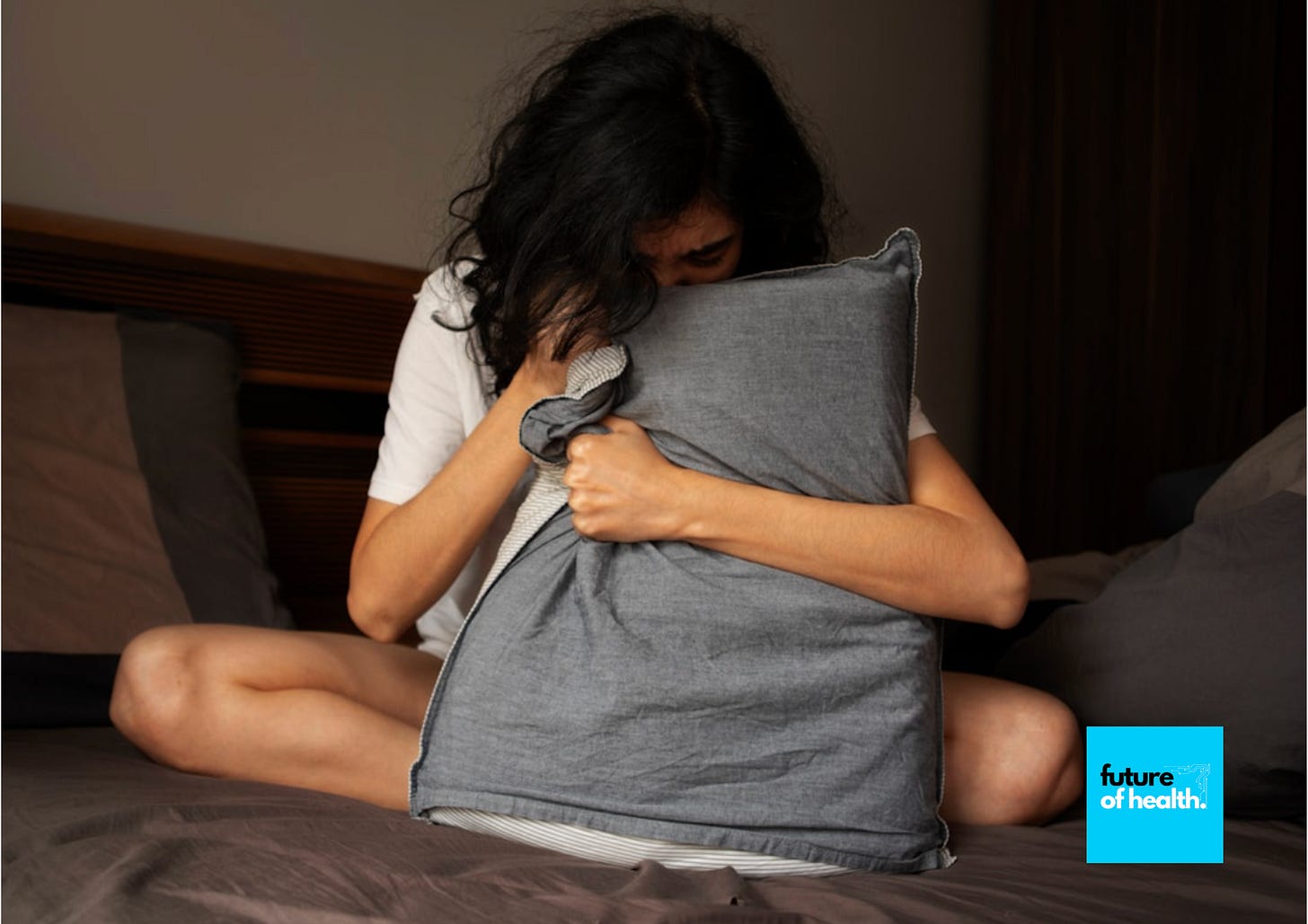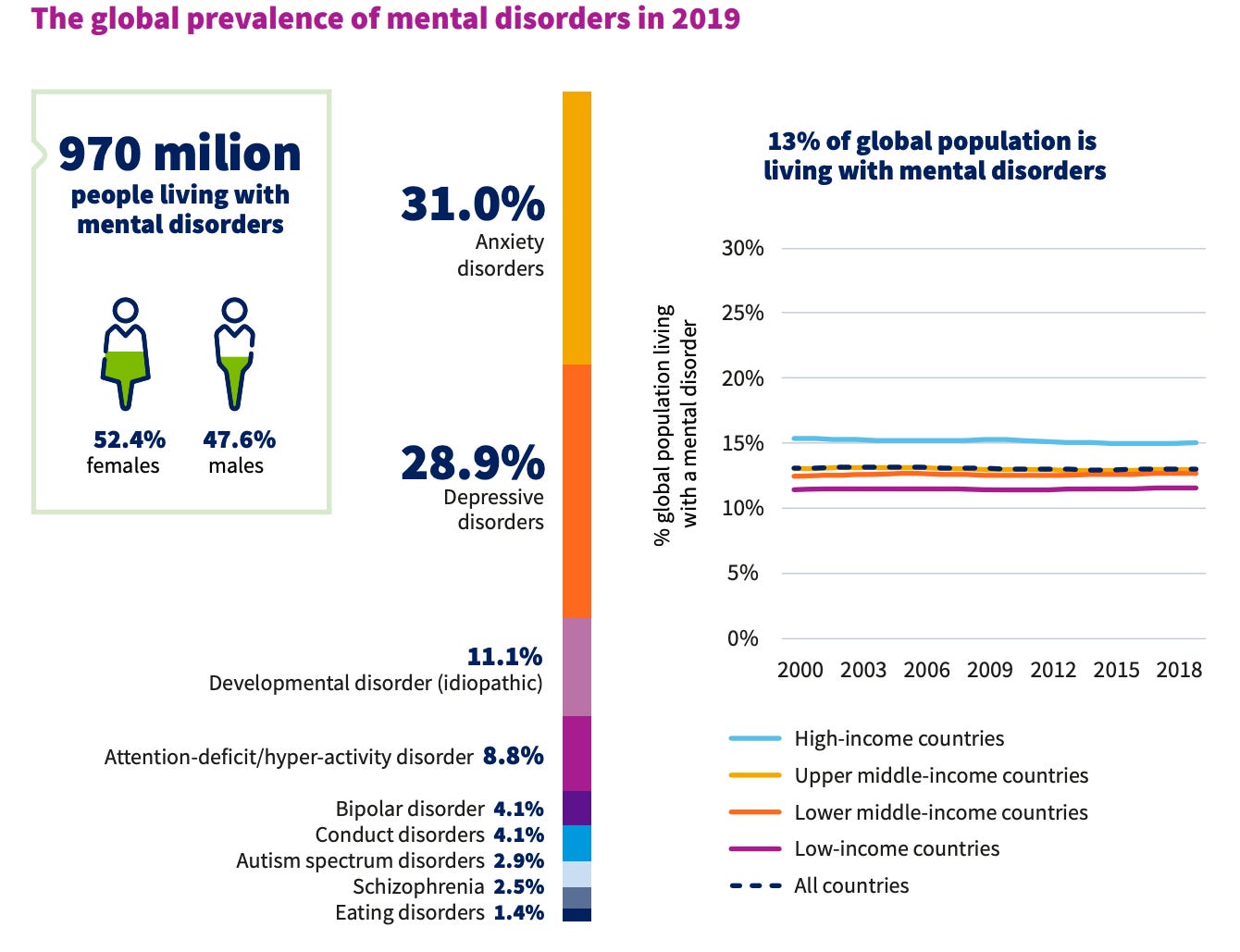Subscribe: If this newsletter was forwarded to you, subscribe here.
Mental Health Is Not a Joke
1 in 8 people globally live with a mental disorder. Among these, 300 million are affected by anxiety. In high-income countries, this number climbs to 15% of the population. Behind these statistics are friends, family, or colleagues struggling to find relief.
The dominant treatment for anxiety today is medication. While drugs like SSRIs and benzodiazepines can be effective, they often come with side effects that many find hard to accept. Therapy, though transformative, requires significant time and resources, often stretching for months or even years (commonly 3–18 months).
Meanwhile, healthcare systems worldwide are under immense pressure. Europe, for instance, faces a projected shortfall of 4 million healthcare workers by 2030—600,000 doctors, 2.3 million nurses, and 1.1 million social care staff and assistants.
This raises an urgent question: How do we support people with anxiety while lightening the load on healthcare professionals?
A New Era of Anxiety Management: Technology
Digital mental health apps like Liven, BetterHelp, and Moovd are already making waves, helping users identify triggers and manage stress. Similarly, wearable devices like Muse and handheld tools like Moonbird are leveraging biofeedback to promote relaxation.
But one category is especially intriguing—‘touch medicine.’
Research shows that tactile stimulation can significantly reduce anxiety, stress, and even physical pain. Skin-to-skin contact—or the next best thing, technology that mimics it—opens the door to a new kind of therapy: one that’s effective, safe, and side-effect-free.
Touchwaves & MYSA: A Game-Changer
I recently spoke with Pauline van Dongen, co-founder of Touchwaves, about their innovative solution, MYSA.
Imagine a wearable shirt equipped with vibrating touch waves that guide your breathing and calm your mind. That’s MYSA.
Pauline described MYSA as more than just a device: “It’s a companion.” The shirt combines tactile stimulation with biofeedback to support anxiety management.
Martin: Anxiety is a growing concern globally. How do you see MYSA fitting into the broader context of mental health solutions?
Pauline: MYSA responds to two critical gaps: the increasing demand for mental health support and the growing interest in actionable tools for self-care. Products like Somnox and Moonbird show that the market is ready for hardware-based solutions that empower individuals to take charge of their well-being.We’re also exploring MYSA’s role within therapy settings. Together with Levvel, a youth care organization, we’re studying how MYSA can help therapists support their clients more efficiently, potentially reducing treatment time. It’s not about replacing professional care but amplifying its effectiveness and providing additional support between sessions.
What’s Next for MYSA?
The potential for MYSA goes far beyond anxiety management. Pauline envisions MYSA extending beyond anxiety support into areas like:
Stress Management in High-Pressure Professions: Healthcare, education, law enforcement, and other demanding fields.
High Performance and Sports: Recovery, focus, and relaxation for athletes.
Broader Mental Wellness: Tools like MYSA offer moments of balance in a chaotic world, encouraging users to pause, breathe, and reconnect.
“At its heart, MYSA is about creating moments of balance in an unbalanced world,” Pauline told me.
And that’s something we can all relate to—a need to pause, breathe, and reconnect.
👉 If you’d like to experience MYSA or learn more, feel free to get in touch here.
+ Health-tech is good
Other topics you might find interesting 💡📍 VCs Pour Over $220 Million into This Business Model
👉 Click here to read the full article.
📍The $8.8 Billion DTC Genetic Testing Market
👉 Click here to read the full article.
This newsletter can impact those around you. Feel free to share it.
P.S. I used some of the following sources to obtain the data for this article:
(1)European Parliament (2)WHO (3) Photo by Solving Healthcare on Unsplash





